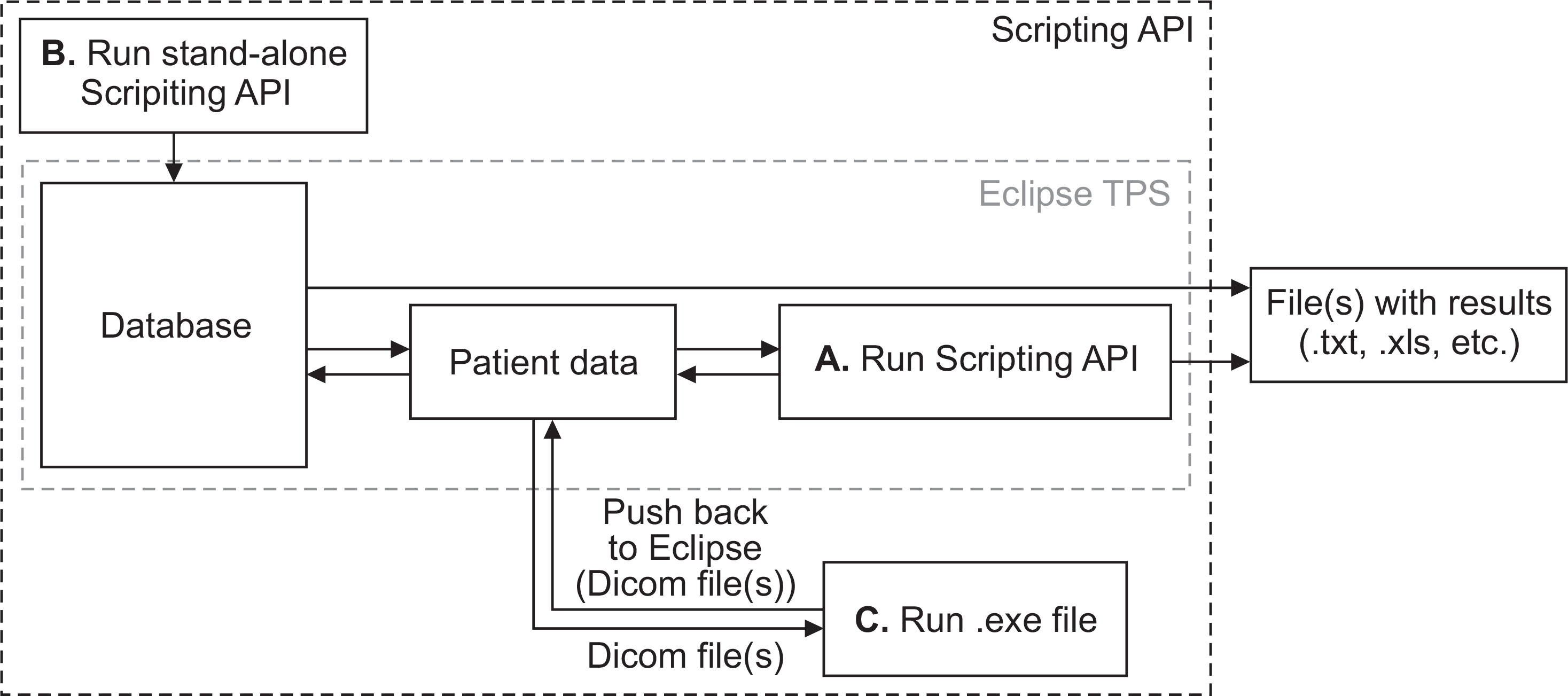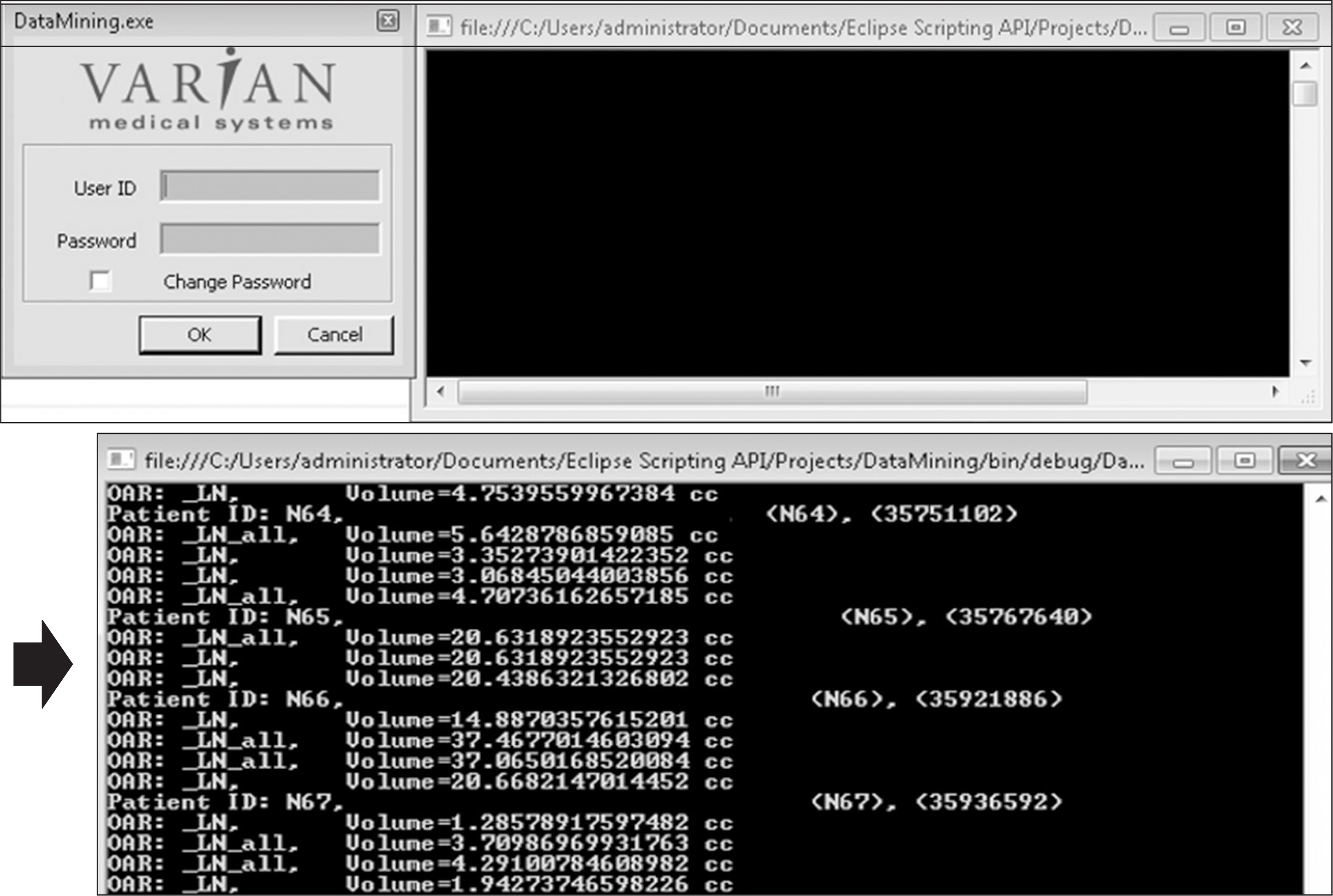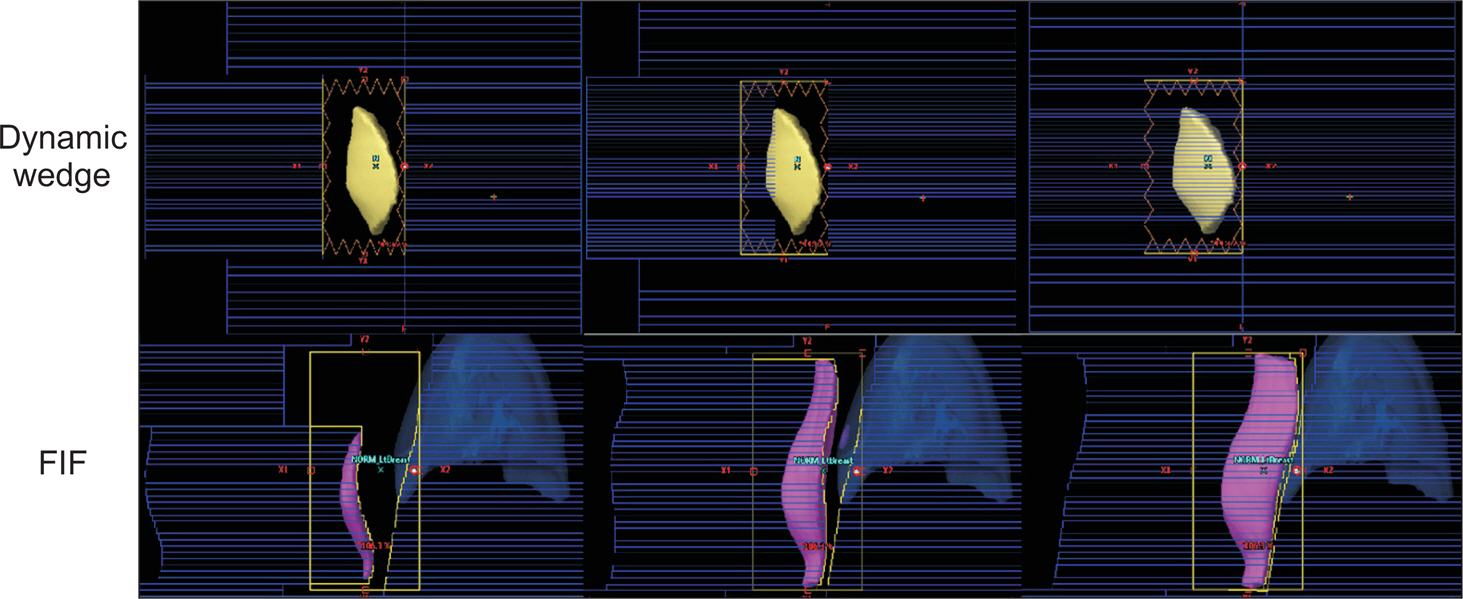Prog Med Phys.
2017 Sep;28(3):122-128. 10.14316/pmp.2017.28.3.122.
Institutional Applications of Eclipse Scripting Programming Interface to Clinical Workflows in Radiation Oncology
- Affiliations
-
- 1Department of Radiation Oncology, Asan Medical Center, University of Ulsan College of Medicine, Seoul, Korea. bccho@amc.seoul.kr
- KMID: 2393373
- DOI: http://doi.org/10.14316/pmp.2017.28.3.122
Abstract
- Eclipse Scripting Application Programming Interface (ESAPI) was devised to enhance the efficiency in such treatment related workflows as contouring, treatment planning, plan quality measure, and data-mining by communicating with the treatment planning system (TPS). It is provided in the form of C# programming based toolbox, which could be modified to fit into the clinical applications. The Scripting program, however, does not offer all potential functionalities that the users intend to develop. The shortcomings can be overcome by combining the Scripting programming with user-executable program on Windows or Linux. The executed program has greater freedom in implementation, which could strengthen the ability and availability of the Scripting on the clinical applications. This work shows the use of the Scripting programming throughout the simple modification of the given toolbox. Besides, it presents the implementation of combining both Scripting and user-executed programming based on MATLAB, applied to automated dynamic MLC wedge and FIF treatment planning procedure for promoting the planning efficiency.
MeSH Terms
Figure
Reference
-
1. Hinton GE, Osindero S, Teh YW. A fast learning algorithm for deep belief nets. Neural Computation. 2006; 18(7):1527–54.
Article2. Jia X, Ziegenhein P, Jiang SB. GPU-based highperformance computing for radiation therapy. Phys Med Biol. 2014; 59(4):R151.
Article3. Xhaferllari I, Wong E, Bzdusek K, Lock M, Chen J. Automated IMRT planning with regional optimization using planning scripts. J Appl Clin Med Phys. 2013; 14(1):4052.
Article4. Hill P, Ramalingam E. Data mining with eclipse scripting. Physica Medica. 2016; 32(7):955.
Article5. Wang H, Xing L. Application programming in C# environment with recorded user software interactions and its application in autopilot of VMAT/IMRT treatment planning. J Appl Clin Med Phys. 2016; 17:189–203.
Article6. Zhu J. Generation of wedge-shaped dose distributions through dynamic multileaf collimator dose delivery. J Appl Clin Med Phys. 2005; 6(3):37–45.
Article7. Mayo C, Lo YC, Fitzgerald TJ, Urie M. Forward planned, multiple-segment, tangential fields with concomitant boost in the treatment of breast cancer. Med Dosim. 2004; 29(4):265–70.8. De la Torre N., Figueroa C.T., Martinez K., Riley S. Chapman, J. A comparative study of surface dose and dose distribution for intact breast following irradiation with fieldin-field technique vs. the use of conventional wedges. Med Dosim. 2004; 29(2):109–14.9. Borghero Y.O., Salehpour M., McNeese M.D., Stovall M., Smith S.A., Johnson J., Perkins G.H., Strom E.A., Oh J.L., Kirsner S.M., Woodward W.A., Yu T.K.Buchholz, T.A. Multileaf field-in-field forward-planned inten-sitymodulated dose compensation for whole-breast irradiation is associated with reduced contralateral breast dose: a phantom model comparison. Radiother Oncol. 2007; 82(3):324–8.10. Prabhakar R, Julka PK, Rath GK. Can field-in-field technique replace wedge filter in radiotherapy treatment planning: a comparative analysis in various treatment sites. Australas Phys Eng Sci Med. 2008; 31:317–24.
Article11. Morganti AG, et al. “Forward planned intensity modulated radiotherapy (IMRT) for whole breast postoperative radiotherapy. Is it useful? When?,” J Appl Clin Med Phys. 2011; 12(2):213–22.12. A. van't Riet, A. C. Mak, M. A. Moerland, L. H. Elders, W. van der Zee. A conformation number to quantify the degree of conformality in brachytherapy and external beam irradiation: Application to the prostate,” Int. J. Radiat. Oncol., Biol., Phys. 1997; 37(3):731–6.13. R. Oozeer, B. Chauvet, R. Garcia, C. Berger, C. Felix-Faure, F. Reboul. Dosimetric evaluation of conformal radiotherapy: Conformity factor, Cancer Radiother. 2000; 4(3):207–15.14. L. Feuvret, G. Noel, J. Mazeron, P. Bey. Conformity index: A review. Int. J. Radiat. Oncol., Biol., Phys. 2006; 64(2):333–42.
- Full Text Links
- Actions
-
Cited
- CITED
-
- Close
- Share
- Similar articles
-
- Radiomics and Deep Learning from Research to Clinical Workflow: Neuro-Oncologic Imaging
- Deformable image registration in radiation therapy
- Comparison of Dose Statistics of IntensityModulated Radiation Therapy Plan from Varian Eclipse Treatment Planning System with Novel Python-Based Indigenously Developed Software
- Deep Learning in Radiation Oncology
- Practical Considerations in Preparing an Institutional Procedure of Image Guided Radiation Therapy





